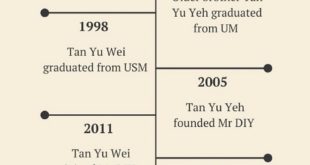Recently, we came across a robot created by a Malaysian that drew similarities to Boston Dynamics’ Spot on Facebook.
Intrigued, I reached out to its creator, Leom, who said that his design was not inspired by Spot at all, despite its visual similarities. “In fact, all 4 legged robots will look alike. Just like how any branded car has 4 wheels,” he told Vulcan Post.
“It was my own inspiration, nothing to do with Boston Dynamics, who I think spent millions of dollars creating it. As a Malaysian I’m proud to say we have something that’s 100% an original design.”
It Began With Legos
From the age of 9, Leom had been inspired by all things mechanical and robotics. Since then, he’s created various small projects with Lego Technic sets and actual hardware based on technical skills he picked up out of curiosity.
After graduating with a degree in Automation and Manufacturing Engineering 13 years ago, he got a job in the robotics field. Back then, the web showed limited resources of robots created by Malaysians themselves. Most 4 legged robots he could find came from NASA or research institutes overseas.
“I was inspired by a 6 legged robot builder from the UK named Matt Denton. At that time he had the most amazing 6 legged robots,” recalled Leom.
This influence became a fundamental goal for him to build a quadruped robot (a robot with 4 legs) that could walk.
Meet Cold Feet
By day, Leom is a machine design engineer in a Malaysian company creating customised manufacturing and automated machines. He would work on his robotics pastime after work and on weekends.
But having a hobby in robotics doesn’t come cheap. To manage the costs, he would design them in such a way whereby their parts could be easily purchased by an average consumer online.
Other than buying parts, the main structure of his robots are usually 3D printed, tremendously bringing down the cost for a prototype. In all, he shared that he’s spent an estimated RM4k on acquiring materials for Cold Feet.
Named Cold Feet, or QSR-X2, the dog-looking android is about the size of an A4 paper (62.37cm²), weighing around 350g. It’s about 9 times smaller than Boston Dynamics’ Spot (550cm²), which is roughly the size of an A1 paper, weighing 31.7kg.
Leom explained that the finished Cold Feet should be able to navigate and move around autonomously. Otherwise, it can also be controlled via a wireless gamepad or a PC anywhere in the world through an online remote.
Furthermore, it will have obstacle avoidance abilities for different terrains and a camera system to track faces. In fact, Cold Feet is the third version of Leom’s quadruped robots designs.
His first was built in 2009, a prototype called QSR-X1 which looked more like a spider. The main goal at the time was to allow it to walk, using a fixed hardcoded programme which he achieved within a few months.
As looks weren’t a priority here, it was built with simple and accessible components he could find in the market. The project went into hibernation until 2017, where the aim became advancing its motion controls for more fluid movement when it walked.
“The hardest part of robotics for this fluid movement was to use something called an ‘Inverse Kinematic calculation’ on the robot you build,” he said.
In layman terms, an engineer would need to derive a complicated set of math formulas to represent all the robot’s joints. Leom designed his own set of formulas within 6 months, which went on to help for his final version of QSR-X1, Black Widow.
With Black Widow, looks mattered. Using proper materials for his robot eased the assembly burden, albeit driving its cost higher. It could also be controlled by a PC via Bluetooth.
Now, he’s staying focused on developing Cold Feet’s features further and has no plans to build another more advanced robot anytime soon.
No Plans To Mass Produce

With Leom’s robots being more of a creative outlet to enhance his technical skills, he told Vulcan Post that he doesn’t plan to monetise his creations for now.
“As I understand in Malaysia, even in other countries like Europe or the US, only a very small group of people will really spend money on something like this unless it’s for an essential need,” observed Leom.
He elaborated that it’s difficult for the general public outside engineering fields to understand its expensive prices. Many may not find it a worthy investment either. As for corporate sectors, countless safety rules and regulations will come into play which will also shoot a robot’s cost higher.
“So, monetising it may not be the right time yet, at least for now. But if we target the hobbies sector or personal educational purposes, I think we might have a chance,” he added.
In terms of Cold Feet’s practical use, Leom shared those who would most benefit from its commercialisation would be first responders.

Think about firefighters called to rescue victims in an earthquake. The robot, with its attached camera, can traverse rough terrains to find casualties stuck under rubble that’s otherwise unsafe for rescuers.
If the product targets the B2C sector, Leom presumes it would be more for entertainment or companion purposes, much like an android pet.
Just like art, creators will always feel like there’s something more to improve for their creation. Leom agreed, believing that Cold Feet has yet to reach its full potential.
“The key question is, what stage do you justify is the goal within the budget you put it on? I can have the ultimate goal for everything that works as ideal in my imagination, but when it comes to reality and practical issues, there are limitations for current technology where we as a human race still don’t have a better way to solve it at the moment.”
Leom, engineer behind QSR-X2.
For now, getting Cold Feet to navigate around on its own without the need for human or remote controls (like a Roomba) is Leom’s ultimate endpoint.
Featured Image Credit: Leom, engineer behind QSR-X2





